#artist is hermann heinrich
Text
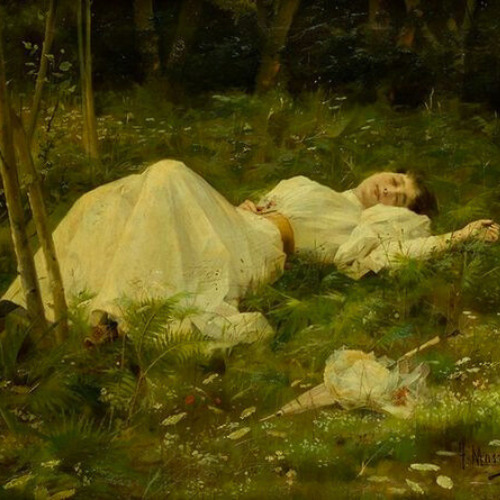
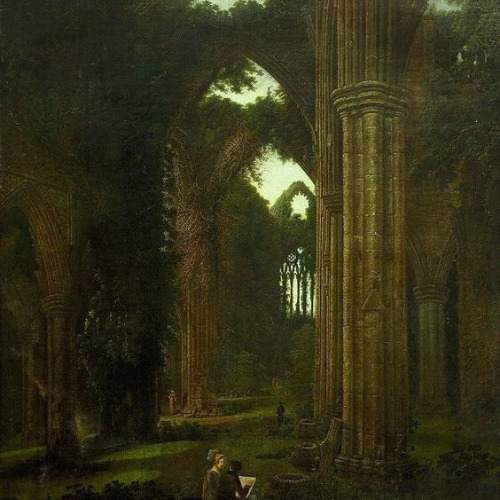
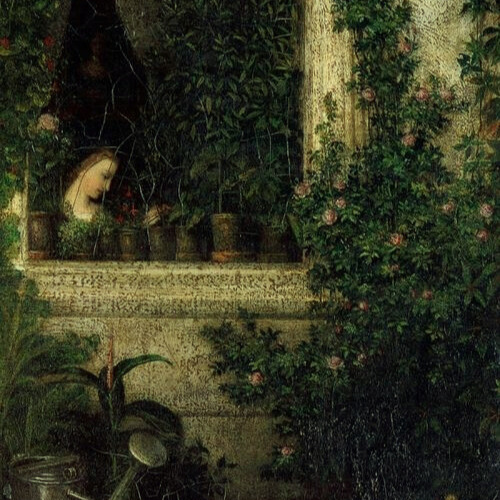

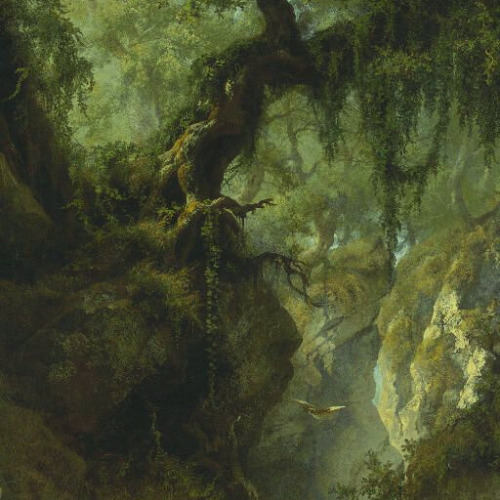


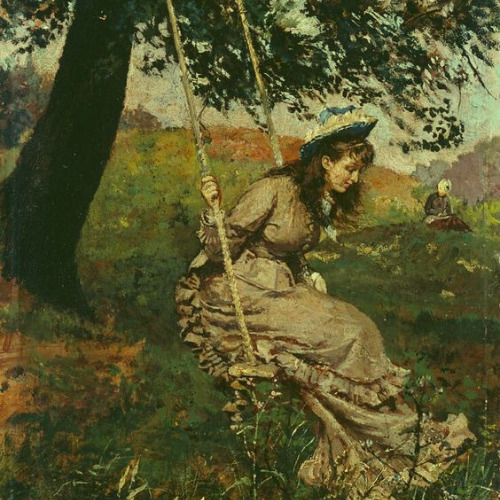

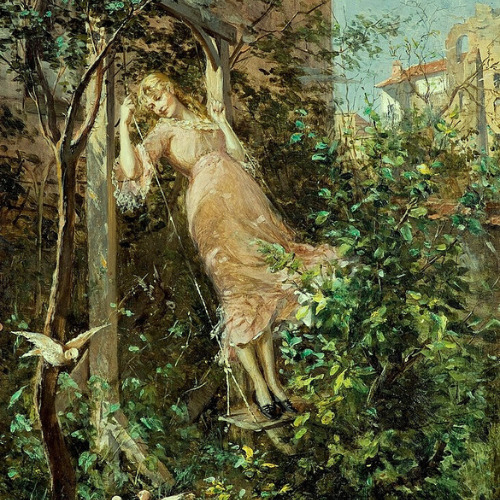


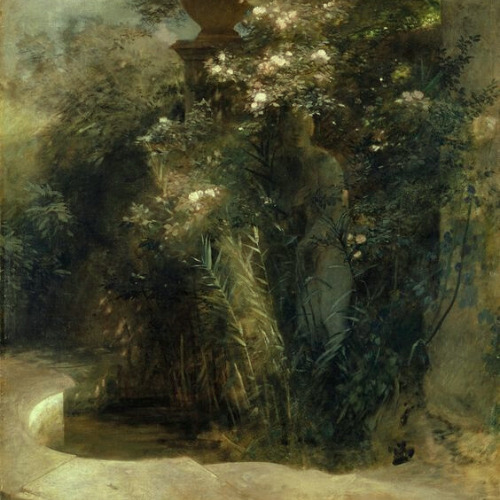
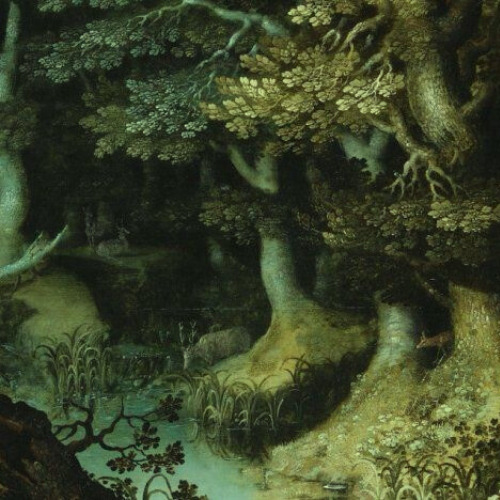

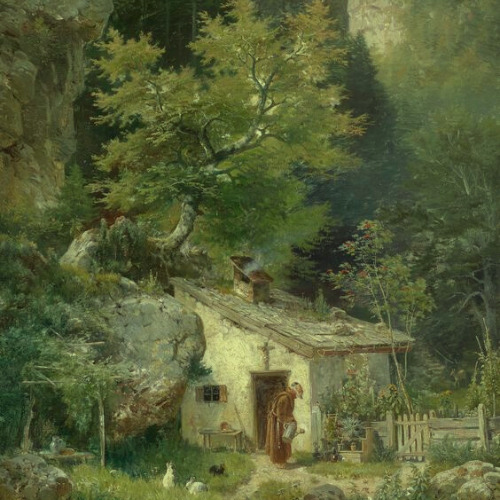





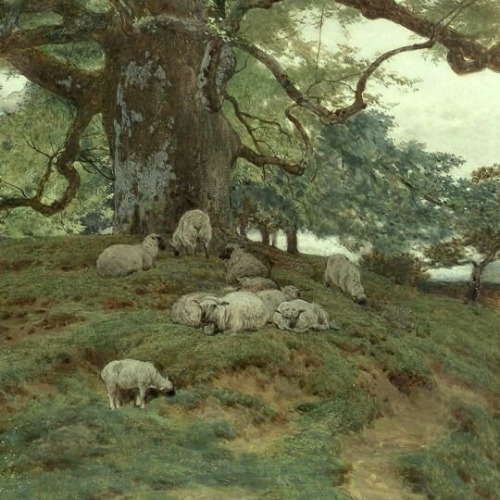
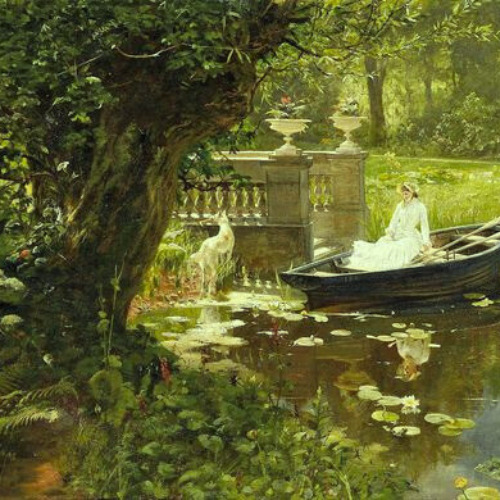
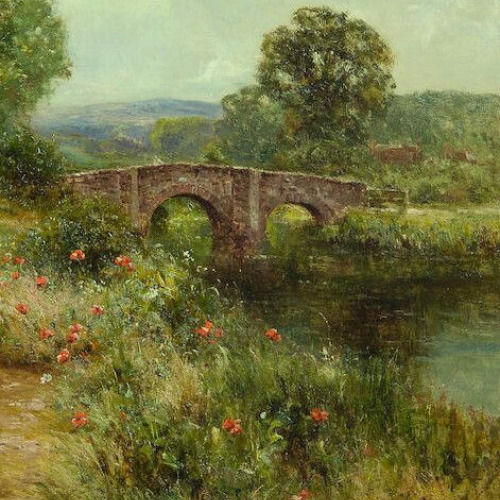
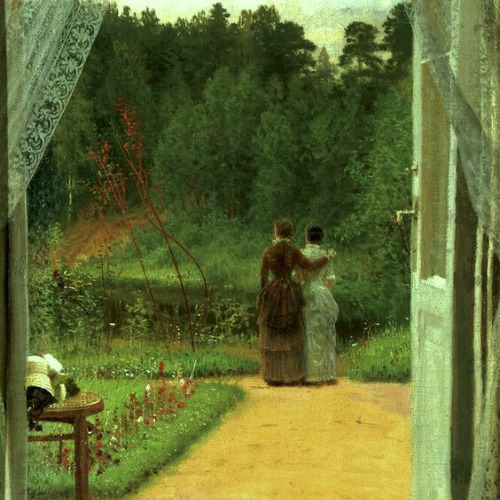

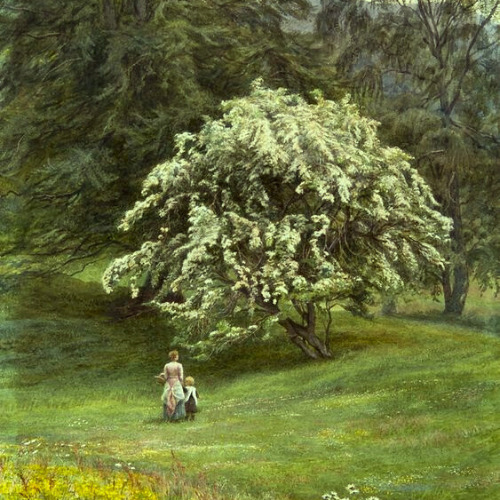
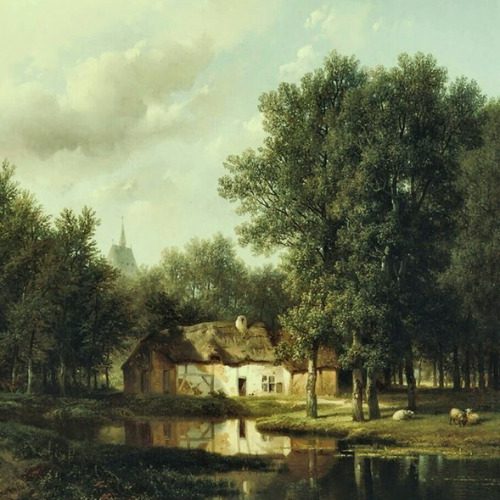
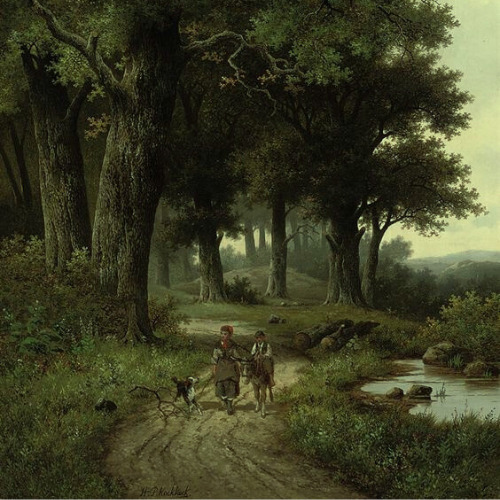

art aesthetics: cottagecore
#artist is francesc masriera#artist is samuel colman#artist is karel purkyne#artist is jan frederik pieter portielje#artist is giuseppe camino#artist is alfred petit#artist is gelhay edouard#unknown artist#artist is albert f laurens#artist is paul mewart#artist is kinuko y craft#artist is peter gardiner#artist is arnold bocklin#artist is cirosata bolarc#artist is hermann heinrich#artist is ludwig sckell#artist is carl ebert#artist is robert zund#artist is robert payton reid#artist is helen allingham#artist is frederick henry henshaw#artist is john dawson watson#artist is gustav marx#artist is ernest walbourn#artist is ivan nikoaevich kramskoy#artist is henry john yeend king#artist is edith martineau#artist is peter ludgwig kuhnen#artist is hendrik pieter koekkeok#artist is emil jakob schindler
395 notes
·
View notes
Photo

The Prinsengracht in Amsterdam on a rainy day - Heinrich Hermanns, 1890.
German , 1862-1942
Oil on canvas , 55.8 x 70.7 cm,
393 notes
·
View notes
Text

baby hans was put on a leash
#my art#artists on tumblr#hans hermann von katte#hans heinrich von katte#it's so weird drawing him without pox scars!
66 notes
·
View notes
Photo

Hans am Ende
“Gänseblümchenparade”, from left to right: Heinrich Vogeler, Fritz Overbeck, Hans Müller-Brauel (archaeologist and local historian), Fritz Mackensen, Otto Modersohn und Hermann Allmers (writer)
1895
#Hans am Ende#photography#1895#Worpswede#artists' colony#Germany#Heinrich Vogeler#Fritz Overbeck#Hans Müller-Brauel#Fritz Mackensen#Otto Modersohn#Hermann Allmers#history#artists
50 notes
·
View notes
Text
ADOLF HITLER
ADOLF HITLER
1889-1945
Adolf Hitler was born and raised in Austria and had an unhappy childhood. His father was brutal, but Hitler looked up to his mother. He was a frustrated teenager and his artistic pursuits were disappointing, even though he had artistic talent. He served as a soldier in the German army during World War I where he was wounded. After the war he was lonely, isolated, and frustrated and he fantasised about much greater things and got entwined in politics.
Germany was in an economic crisis and the German people were desperate for better days. In Munich, his party the National Socialist Party (NSDAP) attracted servicemen and disgruntled citizens. In 1924 Hitler was sentenced to five years in prison for staging the coup ‘Beer Hall Putsch’, he served only nine months and spent that time writing a book. Hitler’s book Mein Kampf (My Struggle) was published in 1925, the book was about his life and his political ideas. After his release he recruited Herman Goring, Heinrich Himmler and master propagandist Josef Goebbels.
In 1933, his party won the parliamentary elections, there started the Nazi party, Third Reich and Hitler was their Fuhrer. Hitler predicted they would be in power for a thousand years and those who initially believed that the Nazi party wouldn’t last, would regret that they didn’t do more when it was possible.
During his time in power he was known for his hatred towards Jews, Communists, Gypsies, political opponents and anybody else he disliked - he had them cruelty treated and killed. On 30 June 1934, was the Night of the Long Knives he destroyed any opponents, to get rid of Jews out of power and made sure he had total control. Hitler created the SS who were loyal only to Hitler and the secret police called the Gestapo. He had anybody he found undesirable sent to concentration camps, where millions died.
Hitler embarked on a military program on a massive scale to make Germany a mega power. He attempted to take power wherever he could, the capture of Austria, Czechoslovakia, and the Rhineland; he then invaded Poland in 1939, which led to war with France and Britain. Winston Churchill refused to be duped by Hitler and even though Hitler first aligned with Stalin, Stalin later turned to side with the allies. In 1941 Hitler invaded the Soviet Union; the Russians were able to drive the Germans back. He then seized Denmark and Norway and then took over France in a matter of weeks. Hitler then declared war on the United States. The Allied troops invaded Germany from the east and west and had Germany in ruins.
On 30 April 1945, Hitler and his wife Eva Braun commit suicide inside his Berlin bunker. The night before, around midnight, he married Braun. He wrote his will and declared Martin Bormann his deputy and expelled former right-hand man Hermann Goering and Heinrich Himmler for disloyalty. The two men had been concerned for Hitler’s mental state and doubted his ability to head the party in the last weeks of Hitler’s life when they would have known that the Third Reich was about to fall.
Hitler and his closest aides had moved into the bunker below the Reich Chancellery garden on 16 January 1945 as allied forces closed in. The bunker housed medical staff, aides, telephonist and his secretary’s. The bunker was decorated in furnishings and artwork.
On 22-23 April, those in the bunker had left but Hitler chose to remain until the end. On 30 April, Allied and Soviet troops moved into Berlin, prompting Hitler and Braun to end their lives. Braun swallowed a cyanide capsules and Hitler then shot himself. Afterwards Bormann doused their bodies with gasoline and set fire to them. That same day, Hitler’s minister Joseph Goebbels and his wife, killed their six children and then committed suicide. A week after Hitler’s death, Germany surrendered which ended World War II. The charred remains of Hitler remained in Russian custody, a skull fragment complete with a bullet hole and four teeth. Hitler and Braun were buried in unmarked grave in east Germany, their bodies along with those of the Goebbels family, were exhumed in 1970 on the orders of KGB boss Yuri Andropov, they were incinerated again, and the ashes poured into a river.

#adolfhitler #worldwarII
2 notes
·
View notes
Text

Richard Schubert, the celebrated tenor and interpreter of Richard Wagner's romantic heroes, embodied a new ideal of the Heldentenor. His predecessors - Schnorr von Carolsfeld, Albert Niemann, later Erik Schmedes, Ernst Kraus and Heinrich Knote - were renowned not least for their voluminous physique and commensurate voices. Schubert in turn, bad a clearly focused, shining voice that enabled him to penetrate the mighty forces of a Wagner Orchestra. Especially lauded, however, was bis youthfully ideal stage appearance with which he managed to do full justice to the magic of his roles. Thus it is no surprise that it was Richard Strauss who actually discovered him. In one of the Nuremberg "Rosenkavalier" productions conducted by him the musician accompanying the tenor in the aria of the "singer" attracted his attention because of his extraordinary histrionic ability. Strauss was later told that said flautist was a student who was studying singing in order later to become a baritone. He decided to keep an eye on him. Nevertheles he could hardly have known that this young man was subsequently to become one of the most celebrated Heldentenors of the Vienna State Opera. Initially Schubert sang minor baritone roles in Strassburg; bis well-developed top range soon showed which way bis career was to turn. Eventually he managed the transition to the tenor repertoire and he subsequently sang in Nuremberg, Wiesbaden and Hamburg, learning the most important Heldentenor roles as well as many lyric roles. Even when he was celebrated as a Heldentenor he. still continued to sing lyric roles where he could relax and "oil" his voice. While in Hamburg he owed a lot to Egon Pollack, then the intendant of the opera. There, on December 4, 1920, he also sang the tenor lead in the world premiere of Komgold's "Die tote Stadt", a role in which he was subsequently acclaimed in Vienna. In April 1920 Schubert was engaged to sing five performances in Vienna. His Radames initially did not quite fulfill expectations as the Viennese were accustomed to the huge voice of Leo Slezak. Yet he managed to convince as Walter, Tannhäuser and Pedro in "Tiefland". A further guest appearance in the tetralogy of the Ring finally convinced all and sundry that here was a grandiose successor to Erik Schmedes, whose style, however, recalled rather the latter's predecessor Hermann Winkelmann. Unfortunately, Schubert could only be signed up for brief periods of time in each case which were used for cyclical performances of Wagner operas. Hence his excursions into the lyric repertoire were few and far between. Also in Richard Strauss' operas he was acclaimed. Thus he was an impressive Bacchus in "Ariadne auf Naxos" (convincing, both in appearance and demeanor as the young God - disappointed and hence suspicious after his Circe adventure - and his subsequent metamorphosis into a fiery young lover), an other-wordly Emperor in "Frau ohne Schatten", a neurotic Herod in Salome, a cowardly scheming Aegisth in "Elektra" or a confused but nevertheless determinedly heroic Menelas in "Agyptische Helena". His artistry was evident also as Samson in "Samson et Dalila", Achill in "Iphigenie in Aulis" and Siegnot in Pfitzner's "Rose vom Liebesgarten". One special curiosity worth mentioning is that this Heldentenor was also an elegant and highly flamboyant Eisenstein in "Fledermaus". However, his vital repertoire remained the Wagner oeuvre - from Rienzi to Parsifal. The excessive demands he made on his voice by singing such an exhausting repertoire all over the world led to a vocal crisis in 1927. A recuperation period turned out to be too brief for him to regain his vocal health completely. Nevertheless admiration was widespread how the artist managed to identify with his roles and thus camouflage his vocal deterioration - so much so, in fact that criticism seemed mere carping. In May 1929 he left Vienna but frequently appeared as a guest artist, acclaimed by his numerous supporters - both male and, more frequently, female. The
phenomenon of his charisma was the secret of his artistry. Thus he frequently appeared as Siegfried and in the last phase of his career, more and more often as Eisenstein, a role in which this glorious Heldentenor last appeared in Vienna on February 15, 1937. After terminating his career he started directing operas and ultimately taught singing in Hamburg. He died on October 27, 1958 in Oberstaufen in the Allgäu.
#Richard Schubert#Richard Wagner#Der Freischütz#Carl Maria von Weber#Lohengrin#Tristan und Isolde#Die Meistersinger von Nürnberg#Das Rheingold#Die Walküre#Siegfried#Götterdämmerung#Die Königin von Saba#Rosenkavalier#Richard Strauss#Tannhäuser#Frau ohne Schatten#Salome#Elektra#Die tote Stadt#Aida#Giuseppe Verdi#Samson et Dalila#Camille Saint-Saëns#Rose vom Liebesgarten#Hans Pfitzner
3 notes
·
View notes
Text

• Nazi Book Burnings
The Nazi book burnings were a campaign conducted by the German Student Union (the "DSt") to ceremonially burn books in Nazi Germany and Austria in the 1930s. The books targeted for burning were those viewed as being subversive or as representing ideologies opposed to Nazism.
On April 8th, 1933, the Main Office for Press and Propaganda of the German Student Union proclaimed a nationwide "Action against the Un-German Spirit", which was to climax in a literary purge or "cleansing" by fire. Local chapters were to supply the press with releases and commissioned articles, sponsor well-known Nazi figures to speak at public gatherings, and negotiate for radio broadcast time. On the same day the Student Union published the "Twelve Theses", a title chosen to be evocative of two events in German history, Martin Luther's burning of a papal bull when he posted his ninety-five theses in 1520, and the burning of a handful of items including 11 books at the 1817 Wartburg Festival on the 300th anniversary of Luther's burning of the bull. This was, however, a false comparison, as the "book burnings" at those historic events were not acts of censorship, nor destructive of other people's property, but purely symbolic protests, destroying only one individual document of each title, for a grand total of 12 individual documents, without any attempt to suppress their content, whereas the Student Union burned tens of thousands of volumes, all they could find from a list comprising around 4000 titles. The "Twelve Theses" called for a "pure" national language and culture. Placards publicized the theses, which attacked "Jewish intellectualism", asserted the need to "purify" German language and literature, and demanded that universities be centres of German nationalism. The students described the action as a “response to a worldwide Jewish smear campaign against Germany and an affirmation of traditional German values.”
On May 6th, 1933, the German Student Union made an organised attack on Magnus Hirschfeld's Institute of Sex Research. Its library and archives of around 20,000 books and journals were publicly hauled out. On May 10th, 1933, the students burned upwards of 25,000 volumes of "un-German" books in the square at the State Opera, Berlin, thereby presaging an era of uncompromising state censorship. In many other university towns, nationalist students marched in torch lit parades against the "un-German" spirit. The scripted rituals of this night called for high Nazi officials, professors, rectors, and student leaders to address the participants and spectators. At the meeting places, students threw the pillaged, banned books into the bonfires with a great joyous ceremony that included live music, singing, "fire oaths," and incantations. In Berlin, some 40,000 people heard Joseph Goebbels deliver a fiery address: "No to decadence and moral corruption!" Goebbels enjoined the crowd. "Yes to decency and morality in family and state! I consign to the flames the writings of Heinrich Mann, Ernst Glaeser, Erich Kästner." Not all book burnings took place on 10 May as the German Student Union had planned. Some were postponed a few days because of rain. Others, based on local chapter preference, took place in June, during the summer solstice, a traditional date of celebration. Nonetheless, in 34 university towns across Germany the "Action against the Un-German Spirit" was a success, enlisting widespread newspaper coverage. And in some places, notably Berlin, radio broadcasts brought the speeches, songs, and ceremonial incantations "live" to countless German listeners.
All of the following types of literature, as described by the Nazis, were to be banned; The works of traitors, emigrants and authors from foreign countries who believe they can attack and denigrate the new Germany (H. G. Wells, Romain Rolland); The literature of Marxism, Communism and Bolshevism; Pacifist literature; Literature with liberal, democratic tendencies and attitudes, and writings supporting the Weimar Republic (Walther Rathenau, Heinrich Mann, Thomas Mann); All historical writings whose purpose is to denigrate the origin, the spirit and the culture of the German Volk, or to dissolve the racial and structural order of the Volk, or that denies the force and importance of leading historical figures in favor of egalitarianism and the masses, and which seeks to drag them through the mud (Emil Ludwig); Books that advocate "art" which is decadent, bloodless, or purely constructivist (George Grosz, Otto Dix, Bauhaus, Felix Mendelssohn); Writings on sexuality and sexual education which serve the egocentric pleasure of the individual and thus, completely destroy the principles of race and Volk (Magnus Hirschfeld); The decadent, destructive and Volk-damaging writings of "Asphalt and Civilization" literati: (Oskar Maria Graf, Heinrich Mann, Stefan Zweig, Jakob Wassermann, Franz Blei); Literature by Jewish authors, regardless of the field; Popular entertainment literature that depicts life and life's goals in a superficial, unrealistic and sickly sweet manner, based on a bourgeois or upper class view of life; All books degrading German purity.
Many German students were complicit in the Nazi book burning campaign. They were known as Deutsche Studentenschaft, and when they ran out of books in their own libraries they turned to independent bookstores. Libraries were also asked to stock their shelves with material that stood up to Hitler's standards, and destroy anything that did not. The Nazis also seized many books from Jewish communities in Eastern Europe. They did intend to keep and display a few rare and ancient books in a museum on Judaism after the Final Solution was successfully completed. The blind writer Helen Keller published an Open Letter to German Students: 'You may burn my books and the books of the best minds in Europe, but the ideas those books contain have passed through millions of channels and will go on." On May 10th, 1934, one year after the book burnings, the Germany Library of Burnt Books founded by Alfred Kantorowicz was opened to assemble copies of the books that had been destroyed. Because of the shift in political power and the blatant control and censorship demonstrated by the Nazi party, 1933 saw a “mass exodus of German writers, artists, and intellectuals…”.
Among the German-speaking authors whose books student leaders burned that night were such figures as; Albert Einstein, Sigmund Freud, Heinrich Mann, Klaus Mann, Hermann Hesse, Franz Kafka, Ludwig Renn, and Karl Marx. Not only German-speaking authors were burned, but also French authors like Henri Barbusse, André Gide, Victor Hugo and Romain Rolland; American writers such as John Dos Passos, Theodore Dreiser, F. Scott Fitzgerald, Ernest Hemingway, Helen Keller, Jack London and Upton Sinclair; as well as English authors Joseph Conrad, Radclyffe Hall, Aldous Huxley, D. H. Lawrence and H. G. Wells; Irish writers James Joyce and Oscar Wilde; and Russian authors including Isaac Babel, Fyodor Dostoyevsky, Ilya Ehrenburg, Maxim Gorki, Vladimir Lenin, Vladimir Nabokov, Leo Tolstoy, and Leon Trotsky. The burning of the books represents a culmination of the persecution of those authors whose oral or written opinions were opposed to Nazi ideology. Many artists, writers and scientists were banned from working and publication. Their works could no longer be found in libraries or in the curricula of schools or universities.
In 1946, the Allied occupation authorities drew up a list of over 30,000 titles, ranging from school books to poetry and including works by such authors as von Clausewitz. Millions of copies of these books were confiscated and destroyed. The representative of the Military Directorate admitted that the order in principle was no different from the Nazi book burnings. Fighting the Fires of Hate: America and the Nazi Book Burnings is a traveling exhibition produced by the United States Holocaust Memorial Museum. Through historical photographs, documents, and films, it explores how the book burnings became a potent symbol in America's battle against Nazism and why they continue to resonate with the public in film, literature, and political discourse to this day.
#second world war#world war ii#world war 2#history#german history#books#burning books#controversial#authors#writings#wwii#h.g. wells#ernest hemingway#helen keller#albert einstein#karl marx#leo tolstoy
22 notes
·
View notes
Text
reading list - psychological fiction
CLICK HERE TO ACCESS MY OTHER READING LISTS.
✵ ACTIVELY UPDATING ✵
☐ BECKETT, Samuel – The Trilogy
☐ BÖLL, Heinrich – Billard um halb zehn
☐ BOWLES, Paul – The Sheltering Sky
☐ CONRAD, Joseph – Lord Jim
☐ COOVER, Robert – The Universal Baseball Association, Inc., J. Henry Waugh, Prop.
☐ DOSTOEVSKY, Fyodor Mikhailovich – Crime and Punishment
☐ EGERTON, Owen – Hollow
☐ FOWLES, John – The Magus
☐ GREENE, Graham – The Heart of the Matter
☐ GOLDING, William – Lord of the Flies
☐ HESSE, Hermann – Die Geschichte von Emil Sinclairs Jugend
☐ HUGHES, Richard – A High Wind in Jamaica
☐ HURSTON, Zora Neale – Their Eyes Were Watching God
☐ ISHIGURO, Kazuo – A Pale View of the Hills
☐ ISHIGURO, Kazuo – An Artist of the Floating World
☐ JAMES, Henry – The Portrait of a Lady
☐ LOWRY, Malcolm – Under the Volcano
☐ McCULLERS, Carson – The Heart is a Lonely Hunter
☐ O'HARA, John – Appointment in Samarra
☐ SCHLINK, Bernhard – Der Vorleser
☐ STENDHAL – Le Rouge et le Noir
☐ TARKINGTON, Booth – The Magnificent Ambersons
☐ TEY, Josephine – Miss Pym Disposes
☐ THEROUX, Alexander – Darconville's Cat
☐ WOOLF, Virginia – Mrs Dalloway
#books#literature#reading list#what to read#fiction#stories#psychological fiction#academia#give me recommendations
2 notes
·
View notes
Text
Munich Opera

Guests can enjoy drinks in the bright conservatory. Lehel Metro Station is just 650 ft from the Hotel Opera. Trains run to Munich Central Station in 5 minutes. Hofbrauhaus Beer Hall is a 10-minute walk away. Altstadt - Lehel is a great choice for travelers interested in Opera. Sightseeing in Munich. The “Bavarian State Opera” you can say that this is one of the world's leading opera houses who can look back on more than 350 years of opera and ballet history. With an amount that reaches around 600,000 guests, who visit more than 450 events a year. Within one season, over 40.
Munich Opera Festival 2021
Roland Schimmelpfennig
Peter Sloterdijk
Cached
Munich Opera 2022
Munich is perhaps the most attractive of Germany’s cities, and has always been a major centre for opera. The Nationaltheater is at the moment enjoying a reputation as one of the finest houses in Europe: ‘La Scala may be grander…, Vienna more stately, the Metropolitan more prestigious… but for all-round excellence in pretty well every department, Munich’s Nationaltheater has the edge, both in matters of creature comforts and sheer dedication to the art’.

Opera apart, Munich is widely considered to be the most agreeable city in Germany in which to live, and rivals Berlin for wealth of art and historic architecture. Munich is everyone’s favourite German city. The seat of the Wittelsbachs, who ruled Bavaria from 1255 until 1918 as Counts, Dukes, Electors and, from 1806, as Kings, Munich was a city which grew up around a court, not one spawned by trade or industry. Consequently, artistically and architecturally it is still one of the best-endowed centres in Europe.
Day 1
London to Munich. Fly at c. 12.45pm from London Heathrow to Munich. Tour the city by coach to see much of the best of Munich’s historic architecture: Neo-Classical Königsplatz, historicist Ludwigstrasse, Jugendstil houses and the modern Gasteig Arts Centre. The first of four nights in Munich.
Day 2

After the daily talk, set out on a walking tour which culminates in a visit to the Alte Pinakothek, one of the world’s greatest Old Master galleries. The afternoon is free, though a visit to the Residenz with its exquisite Rococo Theatre by Cuvillies is recommended. Early evening performance at the Nationaltheater: Tannhäuser (Wagner) with Simone Young (conductor), Romeo Castellucci (director), Georg Zeppenfeld (Hermann, Landgrave of Thuringia), Klaus Florian Vogt (Tannhäuser), Christian Gerhaher (Wolfram von Eschenbach), Dean Power (Walther von der Vogelweide), Peter Lobert (Biterolf), Ulrich Reß (Heinrich der Schreiber), Martin Snell (Reinmar von Zweter), Lise Davidsen (Princess Elisabeth), Daniela Sindram (Venus), Sarah Gilford (A Young Shepherd)
Day 3
Drive out to Nymphenburg, summer retreat of the ruling Wittelsbachs. Set in an extensive park, there is a spreading Baroque palace and several delightful garden pavilions, the apogee of Rococo. Free time in the afternoon, opportunity to visit more of Munich’s many outstanding art collections. Evening performance at the Nationaltheater: Turandot (Puccini) with Jader Bignamini (conductor), Carlus Padrissa (director), Anna Netrebko (Princess Turandot), Ulrich Reß (The Emperor Altoum Timur), Alexander Tsymbalyuk (Timur, the deposed King of Tartary), Yusif Eyvazov (The Unknown Prince, Calaf), Golda Schultz (Liù), Boris Prýgl (Ping), Kevin Conners (Pang), Andres Agudelo (Pong), Bálint Szabó (A Mandarin), Andres Agudelo (The Prince of Persia).
Day 4
Morning walk to see more of the city’s treasures, including the vast Gothic cathedral and the Asamkirche, a Baroque masterpiece. Free time in the afternoon. Early evening performance at the Nationaltheater: Tristan and Isolde (Wagner) with Kirill Petrenko (conductor), Krzysztof Warlikowski (director), Jonas Kaufmann (Tristan), Mika Kares (King Marke), Anja Harteros (Isolde), Wolfgang Koch (Kurwenal), Sean Michael Plumb (Melot), Okka von der Damerau (Brangäne), Dean Power (A shepherd), Christian Rieger (A steersman), Manuel Günther (A young sailor).
Day 5
Munich to London. Fly from Munich to London Heathrow, arriving at c. 1.45pm.
Patrick Bade
Historian, writer and broadcaster. He studied at UCL and the Courtauld and was senior lecturer at Christies Education for many years. He has worked for the Art Fund, Royal Opera House, National Gallery, V&A. He has published on 19th- and early 20th-century painting and on historical vocal recordings. His latest book is Music Wars: 1937–1945.
Price, per person
Two sharing: £3,290 or £3,070 without flights. Single occupancy: £3,630 or £3,410 without flights.
Included

Air travel (Euro Traveller) with British Airways; accommodation as described below; breakfasts, 2 dinners and 1 lunch with wine; private coach for the excursions and transfers; admissions; tips for waiters, drivers and guides; all state and airport taxes; the services of the lecturer and tour manager.
Music
Tickets (top category) for 3 operas are included.
Accommodation
Platzl Hotel München: 4-star hotel located in the heart of the old city, a 5-minute walk from the opera house. Single rooms are doubles for sole use.
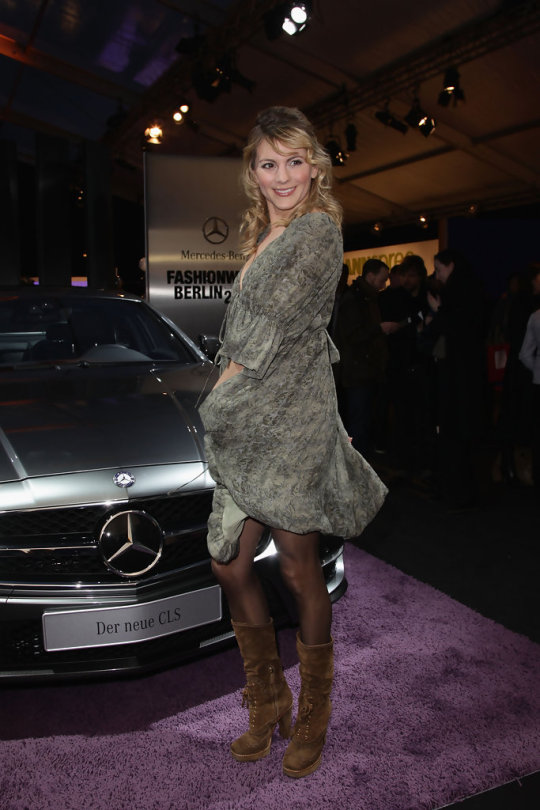
How strenuous?
The tour involves a lot of walking and standing in museums and churches and should not be attempted by anyone who has difficulty with everyday walking and stair-climbing. Average distance by coach per day: 11 miles.
Munich Opera Festival 2021
Group size
Between 10 and 22 participants.
Travel advice
Roland Schimmelpfennig
Before booking, please refer to theFCDO websiteto ensure you are happy with the travel advice for the destination(s) you are visiting.
Peter Sloterdijk
'It promised to be a very fine tour and it lavishly fulfilled its promise.'
'The four operas were all very different with performers of the highest calibre – indeed, quite outstanding. The productions were in our opinion very thought provoking and innovative; we were greatly impressed.'
'Outstanding performers give outstanding performances. Your selection leaves nothing to be desired. To see both Kaufmann and DiDonato live in one week. Magic!'
Dates & prices
Cached
from £3,290
Book this tour
Munich Opera 2022
You may also be interested in...

1 note
·
View note
Text
Kaze to Ki no Uta by Keiko Takemiya



When I think of COVER LOVE there are several books that might spring to mind. But I’m not sure if anything is as besotting quite like the life’s work of Keiko Takemiya, a Japanese comic amazingly made a reality from 1976-1984 Kaze to Ki no Uta, or The Poem of the Wind and the Trees. Through its several editions the covers have always evoked a certain sense of atmosphere. I own a bunko edition by Hakusensha since it’s a nice and small set of the girl’s comic series, featuring more photographic covers and the back summary accompanied by colour drawings.
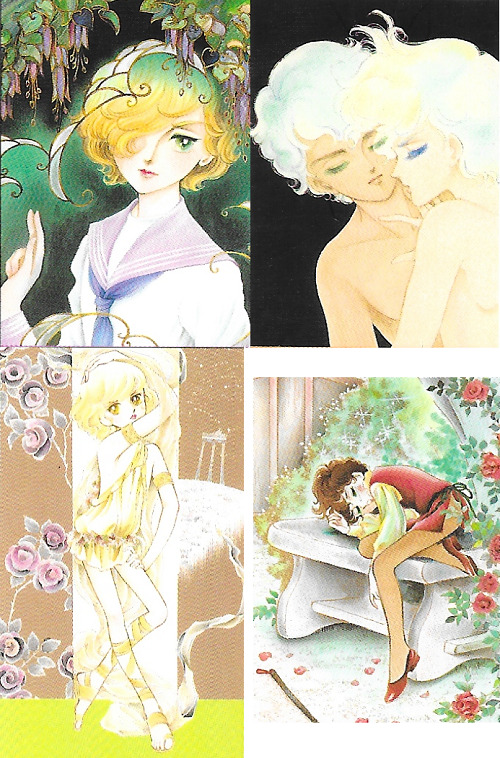

Set in a far-off France of the 19th century past from the first pages, readers know they have been transported and are in for something quite different with a sex scene between two boys at the Lacombrade boarding school near Arles. Going further one will find more of that, as well as racism, homophobia, violence, sexual assault and abuse, child abuse, incest, suicidal behaviour, class issues, drug use and tragedy.
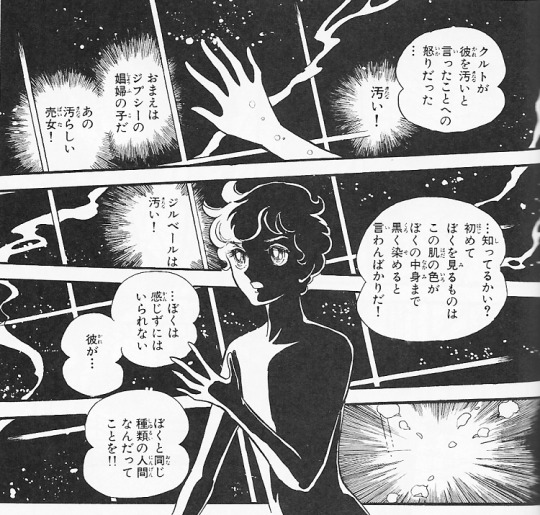
Put simply it’s an opus originally published at 17 volumes and there is a lot to The Poem of the Wind and the Trees, its main characters Gilbert and Serge growing up along with their aristocratic complicated families and associations. The present is connected to the past, the past the present, a theatre showcasing generational cycles. Through thousands of pages covering decades readers get to know these characters and their joys, struggles and failings. I could write far too much about Gilbert’s relative Auguste for example. He’s a headache inducing figure that I often found myself talking into the pages to as if a character in a book could hear me.

A creation from a Japanese woman over forty years ago with a distinguished career the series is an award-winning classic in Japan. Though, that by no means is meant that people all have homogeneous opinions about it. The Poem of the Wind and the Trees presents special challenges because of the controversial nature of some of its elements like paedophilia or, its sexual frankness. Or maybe it’s just simple for some people to say fiction depicting bad things is bad. (Still it’s frustrating and worrying to me to encounter views similar in comparison to how some around Lolita in Western literature degrade it as Nabokov’s sex kitten book. Yet, somehow that even sounds less insensible to how The Poem of the Wind and the Trees can be [mis]interpreted.) It’s encouraging that two teenage boys finding love with each other and struggling in their expression —and it is eroticism as well, an aspect in the story while remaining pertinent today, may be a lesser contentious part comparatively. No matter who you are getting through adolescence probably never gets easy, one reason why unsanitised coming-of-age stories are important.
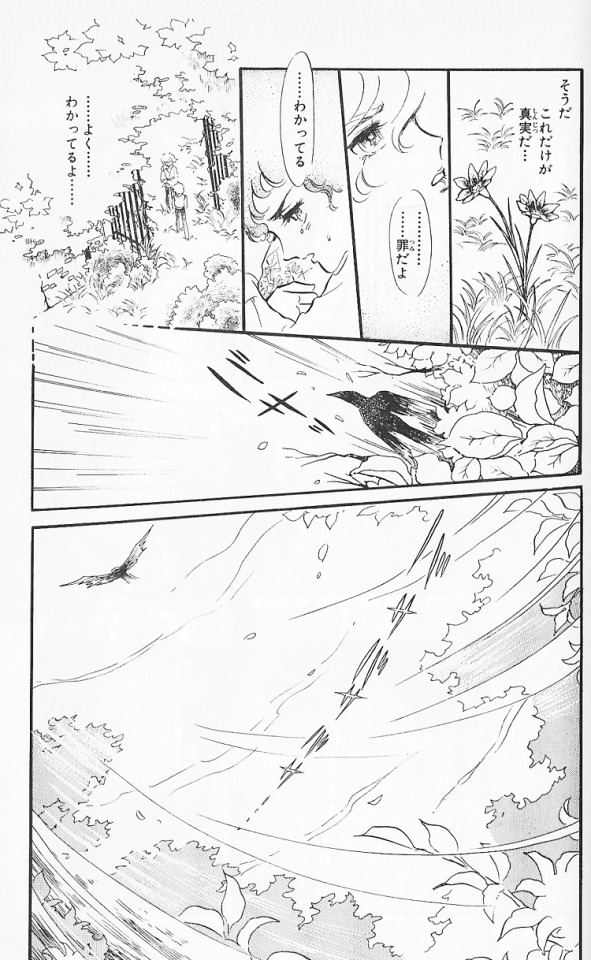
For me The Poem of the Wind and the Trees and Takemiya hold such high status for good reasons. Even all these decades later the composition and themes in the series Takemiya was able to present and fight for doing so still blows my mind. I was not alive in 1976 when it first began publication, so I can only listen to people who were but, it all comes off as damn impressive and shocking then. In fact, it took Takemiya some years to get it published in the first place, finally in the year she turned 26 and then serialised for almost some eight years. At the time artists like Takemiya also drew inspiration and referenced a great variety of classic literature, film and other culture, familiar examples from Europe being work of Alexandre Dumas and his son, Heinrich Heine, Hermann Hesse, Roger Peyrefitte/Jean Delannoy, Jules Verne and Luchino Visconti. (I wonder if Gilbert’s last name might be taken from writer Jean Cocteau too.) The fictional school serving as the main setting for the comic would be familiar as the surname of the lead actor in 1964’s Les amitiés particulières. Some of the students are indeed up to some similar things as the novel the film was based on, though the culture of Lacombrade is more corrupt and much less benign, likewise priests at the very least not being so helpful.

Possibly because I’m fond of such titles, this sort of literary aspect to be found in early shônen ai works is something as the genre evolved to the boys’ love of today, I miss. (Sometimes I experience moments of déjà vu, but It could be I’m just overlooking such styled offerings these days.) I’m also quite partial about stories set in France. Takemiya limited in ways we are not today in researching managed to make her setting rich and detailed complimenting the characters inhabiting it. When Gilbert recalls the resilient motto of Paris, Fluctuat nec mergitur, in the scene below I had to smile.

Something like The Poem of the Wind and the Trees has an aura of only being possible in its time. Takemiya had something to impart and did she show us. (I thought of giving an example of what she does with flowers, but tumblr’s flagging algorithms is silly.)
Perhaps more importantly such a title is still relevant today if people want to process, consider and discuss sensitive topics and the culture around them through fiction. There is much the series can offer its teenage target audience. A true song of adolescence. And here I am as an adult still appreciating and revisiting a decades old comic. Isn’t the best sort of art the kind staying in our memory that we pass on to the next generation and onward after that? Therefore, I hope one day we are at a point that The Poem of the Wind and the Trees will be licensed in English as well. (And French, qu’allez-vous faire?) So that more people can read and discover and likewise debate and have messy conversations over it. I think to not, would be a great loss. I hope to see more thoughtful discussions on it and other classic titles in the future.
Kaze to Ki no Uta by Keiko Takemiya is available in Japanese, the 10-volume release from Hakusensha shown above ISBN# 9784592881513, 9784592881520, 9784592881537, 9784592881544, 9784592881551, 9784592881568, 9784592881575, 9784592881582, 9784592881599, 9784592881605
The series has recently been licensed and translated in both Italy and Spain
Also, the Le poème du vent et des arbres artbook was reprinted in Japan in a revised edition in 2018 ISBN#9784835455921
#1970s comics#shounen ai#the poem of the wind and the trees#kaze to ki no uta#keiko takemiya#風と木の詩#竹宮惠子#english license wishlist
207 notes
·
View notes
Text
Hitler and the Holy Grail
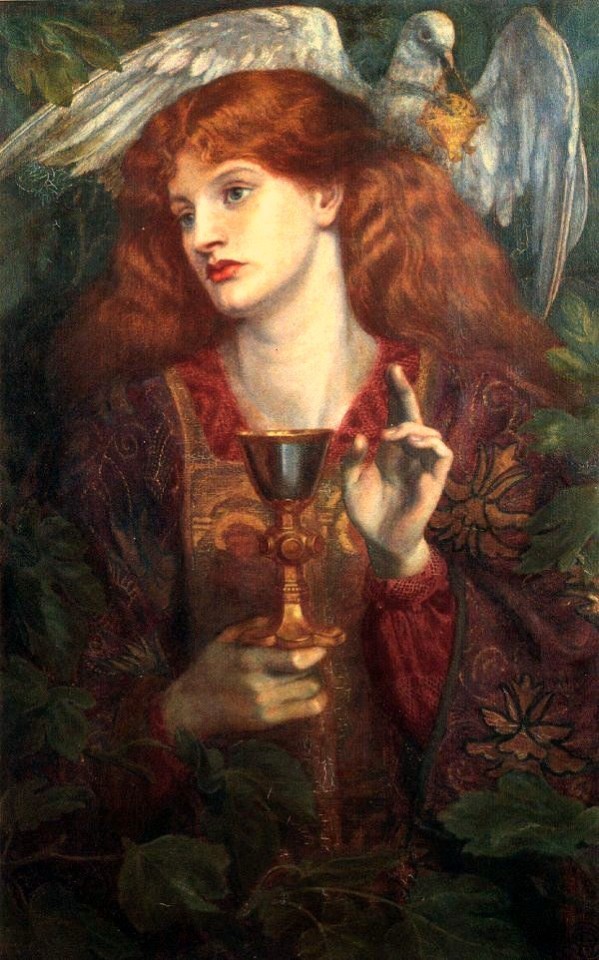
It is widely known that the Nazi party was obsessed with ancient history and the paranormal. They even went as far as to create an entire think tank dedicated to finding ancient relics and mounting expeditions all over the world in order to find ancient relics. The most coveted relics were related to Jesus Christ, such as the famous Ghent Altarpiece, the spear of Destiny and, above all, the Holy Grail.
The Ahnenerbe
The Ahnenerbe is the name of the think tank which was in effect from 1935 to the end of World War II in 1945. It was established by Hitler's right hand man, Heinrich Himmler who was in charge of the SS. The purpose of the Ahnerbe was primarily to connect the Nazi party with the mythologized history that Hitler and Himmler believed about the Aryan race and racial superiority.

The Symbol of the Ahnenerbe contains the magic runes of ancient Germanic lore.
Himmler recruited a retired soldier turned occultist named Karl Wiligut who was practicing what he considered to be a reconstruction of ancient Aryan religion which he referred to as Irminism. Wiligut believed that there were ancient Germanic settlements in the Black Forest and mounted expeditions to ruins located deep within the woods. He also laid out a series of prophecies which lead to Himmler selecting Wewelsburg Castle as the headquarters for the paranormal wing of the SS.
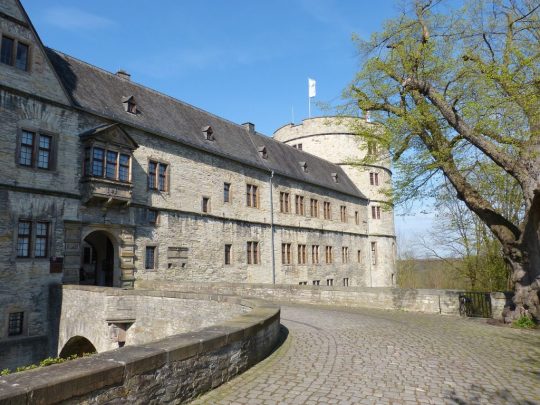
Wewelsburg became the headquarters of the paranormal division of the SS.
Inside Wewelsburg, Himmler dedicated a large room to the Holy Grail with a large crystal as a placeholder.
Ariosophy
Ariosophy or "the wisdom of the Aryans" was an ideological system which flourished in Germany and Austria from the late 19th century into the 1930s. By blending Germanic Romanticism with the concurrent popularity of Theosophy, a few key thinkers formulated Ariosophy as an alternative to Christian history. The two leading thinkers in Ariosophic thought were Guido Von List and Jörg Lanz von Liebenfels. Both of these thinkers focused on resurrecting the Runic Magic used by ancient Germanic people in the area.
Runic Magic is actually well documented at the time of the Roman Empire but differs from what we may think of Runic Magic in the Nazi era. According to Tacitus:
Followers of Ariosophy believed that the magic of the runes was not in the way they were used as a form of divination by throwing them and reading the tea leaves, as it were. They were focused on intrinsic magic which they thought were part of the runes themselves. This was also true of important artifacts of history, which were seen as containing symbolic information which was magical in and of itself.
They attach the highest importance to the taking of auspices and casting lots. Their usual procedure with the lot is simple. They cut off a branch from a nut-bearing tree and slice it into strips these they mark with different signs and throw them at random onto a white cloth. Then the state's priest, if it is an official consultation, or the father of the family, in a private one, offers prayer to the gods and looking up towards heaven picks up three strips, one at a time, and, according to which sign they have previously been marked with, makes his interpretation. If the lots forbid an undertaking, there is no deliberation that day about the matter in question. If they allow it, further confirmation is required by taking auspices.Germania - Tacitus
Irminism
Irminism is not an established religion. Rather, it is a reconstruction of what Nazi occultists believed to be true based on historical evidence they thought they had at the time. Often, they adapted ancient beliefs to fit better with Hitler's own ideology. According to ancient Roman sources, such as Tacitus, Germanic tribes of the North believed in a god named Irmin. Irmin was worshiped at an ancient site called an Irminsul which was a giant wooden pillar, presumably of ancient historical importance. Irminsuls were a type of altar that was made from a large wooden column. Widukind of Corvey describes an Irminsul he observed in 970AD after some Saxons erected a large Irminsul to commemorate their victory in a battle:
When morning was come they set up an eagle at the eastern gate, and erecting an altar of victory they celebrated appropriate rites with all due solemnity, according to their ancestral superstition: to the one whom they venerate as their god of Victory they give the name of Mars, and the bodily characteristics of Hercules, imitating his physical proportion by means of wooden columns, and in the hierarchy of their gods he is the Sun, or as the Greeks call him, Apollo. From this fact the opinion of those men appears somewhat probable who hold that the Saxons were descended from the Greeks, because the Greeks call Mars Hirmin or Hermes, a word which we use even to this day, either for blame or praise, without knowing its meaning.Deeds of the Saxons - Widukind of Corvey
Among ancient Germanic tribes, one particular Irminsul was more famous than all the others. Believed to be near modern day Heresburg, Germany, this Irminsul was seen as the center of ancient Saxon religion. As such, it was a target for military conquests and was ordered to be destroyed by Charlemagne in 772 AD.
The destruction of the most famous Irminsul by Charlemagne.
Wiligut was convinced that the true ancient religion of Irminism began in 12,500 BC and was supplanted by inferior religions later. He believed this so strongly that he frequently performed Irministic rites and ceremonies with high ranking SS officers in attendance.
Wiligut chose Wewelsburg as the site of the headquarters for the SS's paranormal activities because of an ancient legend known as the Battle of the Birch tree about a Western army defeating an Eastern army in battle. He also chose the site because he believed it was a center of cultic energy based on reading ancient runes. In fact, Wiligut is still considered by many to have been an accomplished rune magician.
Despite having common roots, Wiligut did not believe that Ariosophy was the real, true reconstruction of ancient Germanic religion and was key in persecuting followers of the rival ideology.
The Ghent Altarpiece
The Nazi quest for the Holy Grail begins with a perplexing art theft that continues to baffle scholars today. The Ghent Altarpiece, also known as the Adoration of the Mystic Lamb is the first major oil painting in Western Art. It was painted by the famous Belgian artist Jan van Eyck in the 1420s. It is actually a series of paintings which form a rich and bizarre symbolic history of Christianity from Adam and Eve on the outside panels to the sacrifice of the symbol of Christ, a lamb.

The Ghent Alterpiece was full of symbolism.
Hitler and his second-in-command, Hermann Göring, coveted the Ghent Altarpiece above all other works of art. It was the primary objective of the Einsatzstab Reichsleiter Rosenberg or Reichsleiter Rosenberg Taskforce. In fact, when it was stolen, the two Nazi soldiers to find it raced to it to see who could grab it first. Göring actually stole the painting from Hitler again and then Hitler ordered the painting to be returned, where it was stored in salt mines until it was discovered after the war.
Why was the Ghent Altarpiece so desired by Hitler? The piece of art itself did symbolize the sort of High Germanic Art that the Nazi's wanted to use re-enforce the myth of Aryan superiority. The other reason that Hitler wanted the piece so bad was because he thought it contained a symbolic map for finding the Arma Christi. After all, at the very center of the masterpiece, the lamb is bleeding into the Holy Grail.
The Arma Christi
The Arma Christi, which translates to the Weapons of Christ are also known as the Instruments of the Passion. They consist of the Cross, Crown of Thorns, the Spear of Destiny, the Holy Sponge (used to give Christ gall and vinegar when he was thirsty), the Nails of the Cross, the pillar where Jesus was flailed and the flail itself and, at least for the Nazis, the Holy Grail. The primary focus of Nazi expeditions was to recover the Holy Grail and any of the other Arma Christi which they could find.

This is the earliest depiction of the Arma Christi in Western Art from around 1157 AD.
Hitler and the Ahnenerbe believed that acquiring these treasures would lead to supernatural performance by the German army. This included not only the Arma Christi but another of other famous historical objects.
The Expeditions
The first expedition by the Ahnenerbe was to find pagan sorcerers who may hide clues to past religions in their chants. Himmler directed an expedition to Kaleria in Finland in 1935 to study Finnish pagans who were still practicing at the time. He even took along an early sound recorder to record their chants. They also came across a witch by the name of Miron-Aku who claimed to have predicted their arrival.

Miron-Aku was a Finnish soothsayer/psychic and foretold the arrival of Himmler.
Miron-Aku was a 93 year old witch who had been living in a small Finnish village. When the Nazis found her, she said: "You came to me in my sleep and wanted to take away my secrets. Since then I have been sick and will die soon. What do you want of me?" Through a series of rituals, she was said to have summoned ancient ancestors in front of them.
Over the next 10 years, the Ahnenerbe mounted expeditions around the world including Sweden, Poland, Italy, France, Ukraine, Crimea, Tibet and even to Antarctica.
Himmler's interest in the grail took him to look for the ancient cup in France, based on a line from Richard Wagner's Parsifal which stated the grail may be in the "the marvelous castle of Montsalvat in the Pyrenees". Wagner, a classical opera composer from the previous century, was very influential in Nazi thought. Wagner himself based the idea that the grail may be in France based on some lines from a medieval troubadour named Wolfram von Eschenbach. Although Himmler did not find the grail there, he did find that it was mentioned in ancient folk songs from the region.
In Conclusion
There is no evidence that the Nazis ever found the Holy Grail or the other Arma Christi. However, it was not for a lack of trying. Throughout the war, the pace of activity of the Ahnenerbe accelerated until the very end of the war. They did come across impressive archaeological treasures at nearly every turn but they interpreted them through a religious lens that often saw the artefacts in the context of a distorted belief that Aryans were responsible for all of the great developments in human history, often portraying such religious figures as Christ and Buddha as descendants of Aryans. This often blinded them to the true historical nature of their findings. After the war, allies found many of the treasures which were hidden in remote locations and returned them to museums around the world.
Read the full article
6 notes
·
View notes
Photo

St. Martin's train in front of the Dusseldorf Town Hall - Heinrich Hermanns 1905
German, 1862-1942
Watercolor on paper, strung on stretcher. 58 x 52.5 cm.
202 notes
·
View notes
Photo

MWW Artwork of the Day (5/14/19)
Gert Heinrich Wollheim (German, 1894–1974)
Abschied von Düsseldorf (Taking Leave of Düsseldorf)(1919)
Oil on canvas, 160 x 185 cm.
Kunstmuseum, Düsseldorf im Rhrenhof
Wollheim was a painter associated with the New Objectivity, and later an expressionist who worked in America after 1947. He was born in Dresden-Loschwitz and studied at the College of Fine Arts in Weimar from 1911 to 1913, where his instructors included Albin Egger-Lienz and Gottlieb Forster. From 1914–1917 he was in military service in World War I, where he was wounded. After the war he lived in Berlin until 1919, when Wollheim, Otto Pankok (whom he had met at the academy in Weimar), Ulfert Lüken, Hermann Hundt and others created an artists' colony in Remels, (East Frisia).
At the end of 1919 Wollheim and Pankok went to Düsseldorf and became founding members of the "Young Rhineland" group, which also included Max Ernst, Otto Dix, and Ulrich Leman. Wollheim was one of the artists associated with the art dealer Johanna Ey, and in 1922 he was taken to court over a painting displayed at her galler. In 1925 he moved to Berlin, and his work, which always emphasized the theatrical and the grotesque, began a new phase of coolly objective representation. (from Wikipedia bio)
2 notes
·
View notes
Text
INFP booklist
☼ Call of the wild - Jack London
☼ The Great Gatsby - F. Scott Fitzgerald
☼ Walden - Thoreau
☼ Der Untertan - Heinrich Mann
☼ Metamorphosis - Franz Kafka
☼ Momo - Michael Ende
☼ 1984 - Geroge Orwell
☼ Steppenwolf - Hermann Hesse
☼ A Portrait of the Artist as a Young Man - James Joyce
☼ The 13½ Lives of Captain Bluebear - Walter Moers
11 notes
·
View notes
Text
Le Corbusier’s early drawings. 1902-1916
Le Corbusier’s early drawings. 1902-1916, Architect, Modern Building, Photo, Houses, Projects, Studio, Pictures, Designs
Le Corbusier’s early drawings. 1902-1916
21 Sep 2020
Le Corbusier’s early drawings. 1902-1916 News
Curated by Danièle Pauly
September 19, 2020 – January 24, 2021
Teatro dell’architettura Mendrisio
Exhibition promoted by
Fondazione Teatro dell’architettura
With the collaboration of the Accademia di architettura – Università della Svizzera italiana
“Le Corbusier’s early drawings. 1902-1916” | © Enrico Cano Teatro dell’architettura Mendrisio, interno, Università della Svizzera italiana | Architect: Mario Botta
From Saturday September 19, 2020 to Sunday January 24, 2021, the Teatro dell’architettura Mendrisio presents the exhibition “Le Corbusier‘s early drawings. 1902-1916″ promoted by the Fondazione Teatro dell’architettura, in partnership with the Accademia di architettura of the Università della Svizzera Italiana in Mendrisio.
Unité d’Habitation, Marseille, Southern France, celebrated work by Corb:
photo from Colin Bisset
This extensive review features more than eighty previously-unpublished original drawings from public and private Swiss collections, and includes numerous reproductions of drawings from the Fondation Le Corbusier in Paris. It is being held to mark publication of the first volume of the Catalogue raisonné des dessins de Le Corbusier, edited by Danièle Pauly, published by AAM-Bruxelles in coedition with the Fondation Le Corbusier and thanks to the Mendrisio’s Fondazione Teatro dell’architettura contribution.
“Le Corbusier’s early drawings. 1902-1916” | © Enrico Cano Teatro dell’architettura Mendrisio, interno, Università della Svizzera italiana | Architect: Mario Botta
THE EXHIBITION
Curated by Danièle Pauly, this exhibition is devoted to drawings a young Le Corbusier executed between 1902 and 1916: from the year he started attending the School of Applied Arts in La Chaux-de-Fonds, his hometown, to the year before his definitive move to France and the establishment of the architectural studio in Paris.
Almost all of the drawings on display belong to private and public Swiss collections and are largely unpublished: the public will thus have for the first time the opportunity to learn about an exceptional body of rare documents. The exhibition is rounded off by a series of reproductions of original drawings and travel notebooks that Le Corbusier made during the same period.
The Teatro dell’architettura therefore welcomes the story of what determined the birth of a vocation that the young Charles-Edouard Jeanneret, the future architect Le Corbusier (1887-1965), initially thought to be that of a painter. The decisive moment in his education came when he went to study at the School of Art and Applied Arts. There, he attended watchmaking and architecture departments between 1902 and 1907, influenced by charismatic master Charles L’Eplattenier, a painter who subscribed to the ideas of John Ruskin and the Arts and Crafts movement.
“Le Corbusier’s early drawings. 1902-1916” | © Enrico Cano Teatro dell’architettura Mendrisio, interno, Università della Svizzera italiana | Architect: Mario Botta
Other factors that strongly impacted Le Corbusier’s advancement were his experience at Auguste Perret’s atelier in Paris between 1908 and 1909, his frequent visits to museums, encounters with avant-garde European architects at the start of the 20th century, and finally, encouraged by his mentor William Ritter, his study trips between 1907 and 1911 that culminated in a long journey to the East, an experience that deeply influenced his projects in later years..
The works selected for this exhibition show the importance Le Corbusier attributed to drawing from his early days. For the architect, drawings was a way of approaching reality, an instrument for observation. This is clearly evident in the studies of nature he made from 1902 to 1905, during his early years at school. For young Charles-Edouard Jeanneret, drawing was a tool for analysis and research, as we may see from the studies he drew at Parisian museums, and from his early architectural drawings when he was at La Chaux-de-Fonds, between 1905 and 1907.
“Le Corbusier’s early drawings. 1902-1916” | © Enrico Cano Teatro dell’architettura Mendrisio, interno, Università della Svizzera italiana | Architect: Mario Botta
For Le Corbusier, sketches and drawings were also a tool to serve memory, as we may see from his many sketches in notebooks made during his travels; they were also a means of lyrical expression, for example the watercolours and gouaches of landscapes and female nudes that he painted after his return to Switzerland in 1912.
The exhibition is divided into different sections, starting with Le Corbusier’s school years characterized by meticulous pencil drawings of naturalistic subjects, small watercolors of landscapes, decorative studies and projects of handicraft objects with Art Noveau motifs, and then moving on to his period of travel and stays in European capitals: a trip to Italy in 1907 dedicated to studying the Middle Ages and paintings by the “primitive” Italian school, a return to Paris in 1908-1909 where he gained professional experience at the Perret brothers’ atelier, as well as studies of Notre-Dame and from the city’s many museums. He followed this with a trip to Germany in 1910, when he stayed at Peter Behrens’ Berlin atelier, and then went on a long tour of German cities, before his great initiatory journey to the East in 1911.
The final section of the exhibition showcases his return to La Chaux-de-Fonds (1912-1916), a period when Le Corbusier taught, embarked on his work as an architect, adn devoted himself to painting ad drawing a series of landscapes, portraits, family scenes, female nudes and still lifes, foreshadowing the main subjects of the second stage of his output, in which works of purist inspiration continued to prevail.
“Le Corbusier’s early drawings. 1902-1916” | © Enrico Cano Teatro dell’architettura Mendrisio, interno, Università della Svizzera italiana | Architect: Mario Botta
LE CORBUSIER 1902-1916
Le Corbusier, the pseudonym adopted by Charles-Edouard Jeanneret-Gris (1887-1965), was one of the greates architects and urban planners in human history, as well as a painter and sculptor. The son of Georges-Eduard Jeanneret-Gris, an engraver and watch enameller, and Maria Carlotta Amelia Jeanneret-Perret, a musician, he trained at the School of Applied Art in La Chaux-de-Fonds, as an engraver of watch cases.
During his training, he attended drawing and decoration courses, along with an advanced course in interior decoration. Initially keen on pursuing a career as a painter, on the advice of Charles L’Eplattenier, young Jeanneret embarked on a course in architecture that would open the path to his profession.
In 1907, on concluding his studies, he began a journey in Europe. He travelled to Italy, to discover ancient architecture: to Austria, to discover the works of the Wiener Wekstätte and meet the Viennese Secession milieu; to France, where he worked as a draughtsman at the Perret brothers’ atelier in Paris, and to Germany, where he met personalities such as William Ritter, Theodor Fischer, Heinrich Tessenow, Hermann Muthesius and Bruno Paul, working for a spell at Peter Behrens’ practice in Berlin.
Villa Savoie, France:
photo © Isabelle Lomholt
In 1911, with Augusto Klipstein, then a student of art history, he embarked on a long trip to the East, stopping in Prague, Vienna, Budapest, Belgrade, Bucharest, Tarnovo, Gabrovo, Kasanlik, Istanbul, Mount Atos and Athens On his way back to Switzerland, Le Corbusier once again stopped over in Italy, this time to visit Naples, Pmpeii, Rome, Florence, the Certosa di Galluzzo and Pisa. During his Eastern Journey he made hundreds of drawings and sketches, filling entire notebooks with them as well as making annotations.
Later, in 1912, Le Corbusier settled in La Chaux-de-Fonds, where he began teaching Decorative Composition and Architectural Composition in the New Section of the School of Art, and began practicing as an architect at the Ateliers d’Art Réunis. That same year, he won a commission to build a house for his parents at Pouillerel.
Between 1915 and 1916, he stayed in the Landeron, where William Ritter settled, and made several trips to Paris where he designed his Dom-Ino model prefabricated reinforced concrete houses with Max Du Bois. He later met Tony Garnier in Lyon and a few months later, in January 1917, he settled in Paris and opened his first architecture practice..
“Le Corbusier’s early drawings. 1902-1916” | © Enrico Cano Teatro dell’architettura Mendrisio, interno, Università della Svizzera italiana | Architect: Mario Botta
DANIÈLE PAULY
Danièle Pauly is an art historian who obtained her doctorate at the Université des Sciences Humaines de Strasbourg. She is an honorary professor in the Ecole nationale supérieure d’Architecture at Paris-val-de-Seine. Over the years, he research has focused on the work of Le Corbusier, theatre set design and Mexican architecture.
After her early publications, including Ronchamp, lecture d’une architecture (Pu de Strasbourg, 1980), curating exhibitions such as Le Corbusier et la Méditerranée (Centre de la Vieille Charité, Marseille, 1987) and the artistic works section of L’aventure Le Corbusier (Centre Pompidou, Paris, 1987), in recent years Danièle Pauly has devoted herself to researching the Swiss architect’s graphic works through exhibitions Le Corbusier, le dessin comme outil (Nancy, 2006-2007), Le Corbusier. Le jeu du dessin (Antibes-Münster, 2015-2016) and Le Corbusier.
The Paths to Creation (Seoul, 2016-2017), along with publication of Le Corbusier. Albums d’Afrique du Nord in 2013, of Ce labeur secret, Le Corbusier et le dessin in 2015 and in 2018 Le Corbusier. Drawing as Process, published by Yale University Press.
She is the author of the Catalogue raisonné des dessins de Le Corbusier, of which Volume I was published at the end of 2019.
“Le Corbusier’s early drawings. 1902-1916” | © Enrico Cano Teatro dell’architettura Mendrisio, interno, Università della Svizzera italiana | Architect: Mario Botta
THE CATALOGUE ON DISPLAY
“Catalogue raisonné des dessins de Le Corbusier”
Volume I, 1902-1916
edited by Danièle Pauly
Between October 1902 and May 1965, Le Corbusier made several thousand drawings and sketches. About 5000 of these are housed at the Fondation Le Corbusier, the rest are in public and private collections. Starting in 2019, working in partnership with the Fondation Le Corbusier AAM Editions (Paris-Brussels) began an ambitious project to publish a four- volume catalogue raisonné of the architect’s drawings.
The first volume, which is on sale at the exhibition after publication in December 2019, is dedicated to Le Corbusier’s education and travel (1902-1916), until he definitively moved to Paris in early 1917.
AAM Editions Bruxelles / Fondation Le Corbusier
supported by:
Centre National du Livre, Parigi
Fondazione Teatro dell’architettura, Mendrisio
32 x 24 cm, 304 pages, cartonboard, 968 ill., b/w and colour, french language edition
Price at exhibition 50 CHF/Euro
Chapel of Notre Dame du Haut in Ronchamp, France:
photograph from Colin Bisset
LIVING LE CORBUSIER
The Accademia of architettura of the Università della Svizzera Italiana, in partnership with MDFF-Milano Design Film Festival, is promoting the “Living Le Corbusier” programme, a selection of films made between 1966 and 2018 by French, Italian, Swiss architect, which can be viewed from 19 September 2020 to 24 January 2021 in the Gallery on the second floor of the Teatro dell’architettura Mendrisio.
THE TEATRO DELL’ARCHITETTURA A MENDRISIO
The Teatro dell’architettura Mendrisio, built on the Campus of the Academy of Architecture – Università della Svizzera Italiana, was designed by arch. Mario Botta, promoted and realized thanks to the joint work of the Università della Svizzera italiana and the Fondazione Teatro dell’architettura, in order to offer a privileged dialogue space for the cultural debate on architecture, the city, the landscape.
Alongside the teaching and research activities carried out within the Academy of Architecture, this initiative aims to strengthen the educational offer with exhibitions, seminars and different activities to give visibility to the new transdisciplinary interests that increasingly intervene in the design process and redefine the social role of architecture.
The Teatro dell’architettura also serves as a platform for exchange with other institutions for which contemporary culture is the field of interest.
MUSEI D’ARTE DEL MENDRISIOTTO
In 2020 the Teatro dell’architettura Mendrisio, together with the Vincenzo Vela Museum in Ligornetto, the Pinacoteca Giovanni Züst in Rancate, the m.a.x. museum in Chiasso and the Museo d’arte Mendrisio, have activated the Network Musei d’Arte del Mendrisiotto (MAM) with the aim of strengthening visibility, promoting knowledge and enhancing the presence of the institutions themselves, underlining the diversity, richness and complementarity of their cultural offerings (painting, sculpture, architecture, design, graphics and photography) both at regional and national level and internationally.
In order to encourage the public to move around the territory and visit the museums of Mendrisiotto, on the occasion of the promotion of the network and starting from September 2020.
INFORMATION
“Le Corbusier’s early drawings. 1902-1916”
September 19, 2020 – January 24, 2021
Curated by Danièle Pauly
Exhibition promoted by the Fondazione Teatro dell’architettura, in partnership with the Accademia di architettura – Università della Svizzera italiana.
Teatro dell’architettura Mendrisio
Via Turconi 25 – 6850 Mendrisio, Switzerland
Open days:
sunday 04.10.2020, 10 am- 6 pm
sunday 01.11.2020, 2 pm- 6 pm
sunday 06.12.2020, 10 am -6 pm
sunday 03.01.2021, 10 am – 6 pm
sunday 24.01.2021, 10 am – 6 pm
Reserved required at [email protected]
For accreditation/exhibition press kit:
Servizio Comunicazione istituzionale USI
E-mail: [email protected]
In Italy: ddl studio | T +39 02 8905.2365
Alessandra de Antonellis | E-mail: [email protected] | T +39 339 3637.388
Ilaria Bolognesi | E-mail: [email protected] | T +39 339 1287.840
Calendar and Opening Hours:
“Le Corbusier’s Early Drawings. 1902-1916” Exhibition.
September 19, 2020 – January 24, 2021
· tuesday / wednesday/ thursday / friday: 2-6 pm
· saturday / sunday: 10 am – 6 pm
· information on special openings and closures: https://ift.tt/35RFco0
Contact and info:
Tel.: +41 58 666 5867 – E-mail: [email protected]
Tickets for the “Le Corbusier’s Early Drawings. 1902-1916” Exhibition
· Full price: CHF/Euro 10.-
· Reduced: CHF/Euro 7.- (Students wirth card, FAI Italia, FAI Swiss, OTIA, AVS/AI, groups)
· Free entrance: Students, USI-SUPSI collaboratorators and teachers, Friends of the Academy of Architecture, anyone under the age of 18, and all pupils at school in the Canton of Ticino.
· Reduction of 2 CHF/Euro for MAM card holders
LIVING LE CORBUSIER
September 19, 2020 – January 24, 2021
Curated by Silvia Robertazzi and Marco Della Torre
Programme organized by the Accademia di architettura – USI, in partnership with Milano Design Film Festival
Teatro dell’architettura Mendrisio
Via Turconi 25
6850 Mendrisio, Switzerland
Calendar and Opening Hours
“Living Le Corbusier” programme
September 19, 2020 – January 24, 2021
· tuesday / wednesday / thursday / friday: 2 – 6 pm
· saturday / sunday: 10 am – 6 pm
· information on special openings and closures: https://ift.tt/35RFco0
· Programme of screenings on the website https://ift.tt/2EiWQ8I
· Free entrance
Contact and info
Tel.: +41 58 666 5867 – E-mail: [email protected]
Le Corbusier Buildings
Le Corbusier – highlights below:
Villa Le Lac, Corseaux, Switzerland by Jan Theuninck, acrylic on canvas, 70 x 100 cm, 2017
image courtesy of Jan Theuninck
Loving Le Corbusier
A new novel ‘Loving Le Corbusier’, tells the story of Yvonne, the wife of architect Le Corbusier.
Book cover:
Yvonne, the architect’s wife:
photograph © Fondation Le Corbusier
The architect’s grave – designed by himself – in the south of France:
photo from author Colin Bisset
Cité de Refuge, 12 Rue Cantagrel, 75013 Paris, France
photo by Rory Hyde
Cité de Refuge Building in Paris
Corb Tapestry at Sydney Opera House, New South Wales, Australia
photo from www.smh.com.au
Sydney Opera House
Villa La Roche, Paris, France – added 12 Jun 2011
Date built: 1925
Design: with Pierre Jeanneret
photograph © Karavan
Villa La Roche
Villa Savoie, Poissy, north west of Paris, France
Date built: 1929
Villa Savoie – key Modern French building
Villa Savoye : photos of this famous Le Corbusier house as a ruin.
Le Corbusier Show : The Interior of the Cabanon
Le Corbusier Exhibition : RIBA, London
Unité d’Habitation, Berlin
German Unité d’Habitation Berlin Le Corbusier building
American Le Corbusier building – UN Building New York
Location: 35 rue de Sèvres, Paris, France
Architecture Practice Information
Former architect studio based in Paris, France – world-famous Modernist architect
Corb had his architect studio at 35 rue de Sèvres from 1922 with his cousin Pierre Jeanneret.
Paris Architects : Parisian Architecture Studios
French Buildings
Modern Architecture
Modern Architects
Modern Houses
Paris Architecture
Architecture Studios
Buildings / photos for the Le Corbusier Paris Architecture – French Modernist Architect page welcome
Website: Fondation Le Corbusier, Paris
The post Le Corbusier’s early drawings. 1902-1916 appeared first on e-architect.
0 notes
Text
Albert Renger-Patzsch: Aesthetics and Politics in times of Fascism
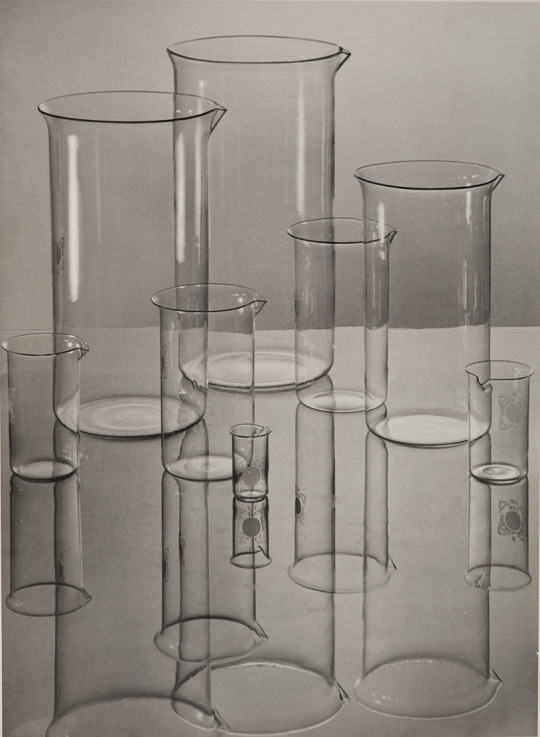
Albert Renger-Patzsch, Glass from Jena (cylindrical glass), silver gelatin print, 1934
When is it ignorant and dangerous to discuss art in purely aesthetic terms? The current retrospective of photographs by Albert Renger-Patzsch at the Jeu de Paume in Paris (on view through the 21st of January) is a good example of what happens when art is inadequately contextualized by a museum.
Even though Renger-Patzsch claimed that his work was not art, but rather a truthful depiction of the things in our world - both man-made and natural - it is impossible to overlook how his precisionism and compositional rigidity made a lasting impression on generations of photographers and artists alike.
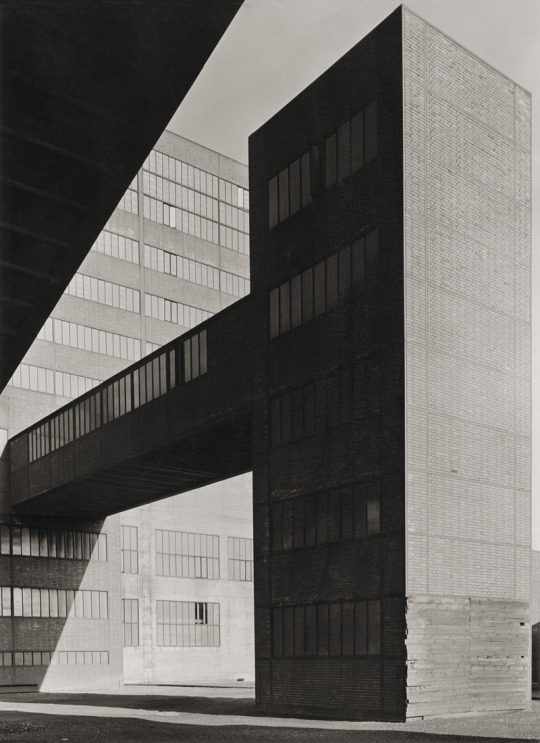
Albert Renger-Patzsch, Coal Mine��“Graf Moltke”, silver gelatin print, 1952-53
The pictorial quality of his photographs is not in doubt: they are stunning, crisp, technically masterful. They show every minute detail of organic and manufactured surfaces. Clear lines and deep shadows emphasize the drama of light and dark, of form and structure. We never see imperfections in a glass, cracks in a wall of concrete, peeling paint or a flower’s torn petal. Renger-Patzsch serves us a vision of things that are part of an undisturbed, strangely airless world - as if all of it existed in a vacuum: the world as artifice. Aside from his earlier work on fishermen/-women and some artisans, people are extracted from all sites. This is not a world simply devoid of human activity and labor, but one that has been scrubbed down and sanitized with help of the photographic lens (and some off-camera arrangements).

Albert Renger-Patzsch, The “Iron Hand” in Essen, silver gelatin print, 1929
None of these characteristics are necessarily a critique of his work. Renger-Patzsch’s formalism is consequential and thorough, yet we have to ask: what were the limitations for artists in Germany of the late 1920s and early 1930s?
Starting in September 1933, just a few months after Hitler and his party had taken power, a cultural institution (the so-called ‘Reichskammer der bildenden Kuenste’) was installed and tasked to oversee, shape and - where necessary - censor the visual arts. Scores of artists like Käthe Kollwitz, Otto Dix, George Grosz, John Heartfield were prohibited from working or chose to leave Germany altogether. In 1929 Renger-Patzsch’s contemporary and fellow photographer August Sander published the book Face of our Time which contained 60 portraits of people he had encountered across Germany. In 1936 the Nazis confiscated all remaining copies of the book and in addition, destroyed Sander’s negatives of his portraits as his project aimed at providing a cross-section of German society without maligning any particular group or individual.

August Sander, Soldier, Gelatin silver print, c.1940
Renger-Patzsch, on the other hand, continued to work through the 30s and early 40s, gaining lucrative commissions from coffee companies and pen producers to industrial heavyweights like Boehringer Ingelheim (to this day one of the leading pharmaceutical companies, the main supplier of morphine in Germany during WW2 and in the 1960s a supplier of Agent Orange for the US military).
Due to his interest in literature, Renger-Patzsch was in correspondence with leading German intellectuals like Hermann Hesse, Heinrich Böll and from 1943 to his death in 1966 with Ernst Jünger (In 1962 and again in 1966 the firm C.H. Boehringer Sohn - the sister company of Boehringer Ingelheim - commissioned Renger-Patzsch to produce photographs that were accompanied by Ernst Jünger texts.). If there is any confusion as to where Renger-Patzsch can be placed politically, his relation with the three writers does not actually help to shed any light. Hesse and Böll are affiliated with the liberal left and have been fierce critics of the Third Reich and Germany’s moral bankruptcy during Hitler’s reign throughout their careers. Jünger is an entirely different case. A highly decorated officer during WW1 and an early sympathizer of the National Socialists (Hitler’s party, who he thought had “more blood and fire than any of the recent revolutions”), Jünger remains a contested figure in Germany. He was able to maintain just enough distance to the unfolding horrors of the Third Reich while simultaneously engaging in intellectual flirtations with opposition figures and far left-politicians - a pattern (self-serving or not) that has rendered him politically ambiguous, if not entirely useless. In recent decades the so-called “New Right” movement in several Western European countries (similar to the Alt-Right in the US) has rediscovered him and reclaimed some of his ‘revolutionary conservatism’ as well as the idea of a ‘new nationalism’ to overcome the failures of the National Socialists.
In this light, it is awkward to enter the Jeu de Paume and visit the curator Sergio Mah’s exhibition where we find many quotes from Renger-Patzsche’s exchange with Ernst Jünger among the wall text, but no word on how these high forms of aesthetics mask the turmoil of the times they were created in. One could argue that the exhibition aptly titled “Things”, does not have to focus on the social or historical dimension of photography. But that would not be accurate either, since Renger-Patzsche’s work offers plenty of opportunities to discuss the ‘things’ we do not see or that we are not supposed to see right away.

Detail of “The Iron Hand in Essen” by Albert Renger-Patzsch, 1929
In the enlarged detail above, Renger-Patzsch captured some political graffiti that was written on the factory wall of the “Iron Hand”. The German reads as follows: “Die Arbeiter müssen wählen & siegen.” The workers must vote & win. Above the “&” (that looks more like a 9), somebody has added a swastika. After the great crash in 1929, Germany held a referendum later that year in December which resulted in significant gains for Hitler’s National Socialists. It is similarly significant that Renger-Patzsch recorded a political slogan which stands out among 190 photographs of plants, trees, rocks, factories and landscapes. We do not gain any more insight into this photographer’s beliefs or political identity and it might not even matter for his work. But what matters is that even a formal purist and admirer of the surface like Renger-Patzsch could not entirely escape the pull of his time. To suddenly see written language (the graffiti in this case) alongside his well-tuned and polished pictorial language, seems entirely appropriate given the context of Germany in 1929. And it is not just appropriate but enlightening to see that the complicated realities that brought down the Weimar Republic, while giving rise to the Third Reich, coexist side by side with the artistic, formalist features in this image. This photograph demonstrates how a mix of willful blindness (the kind of blindness that comes with wide-open eyes), excitement about progress and human-made environments, paired with the promise of a better future for the workers and capitalists alike, lead to a quick disenchantment with only two options: resistance or survival. It is safe to assume that Renger-Patzsch chose the latter.

Albert Renger-Patzsch, Ruins in the Segeroth neighborhood of Essen, Gelatin silver print, 1943
A year before Renger-Patzsch lost many of his archived negatives to an allied bombing and the ensuing fire, he documented the first air raid on the city of Essen where he had been living since 1929. What is remarkable about these ruin photographs is how Renger-Patzsch tried to uphold a sense of order and strict composition while the conditions on the ground did not allow for such impositions. The tall tower in the middle of the background and the lone figure right in the center of the image offer the only reference to his trade-mark composition - the rest lies in ruins and beyond his control.
The exhibition “Things” at the Jeu de Paume has missed an opportunity to follow through with Renger-Patzsch’s approach to the world: to examine it closely, to linger on the surfaces of things and to assume a reality beyond those surfaces. There is no need to accuse Renger-Patzsch of a lack of social awareness or political urgency. What he does, he does extremely well and he owns his place within the history of photography. But museums and curators (and galleries by extension) have a responsibility to direct their viewers toward those things unseen, the things that lie beyond the physical works of art and are generally considered part of history - political, social, intellectual or otherwise. There is a lot of pleasure in admiring beautiful art objects, but there is so much more to learn if we ask ourselves how they were made, under what conditions, when and why. And thankfully, it is never too late to learn.
#albert renger-patzsch#renger-patzsch#photography#formalism#minimalism#war photography#jeu de paume#things#august sander#third reich#national socialist#hitler#ernst jünger
2 notes
·
View notes